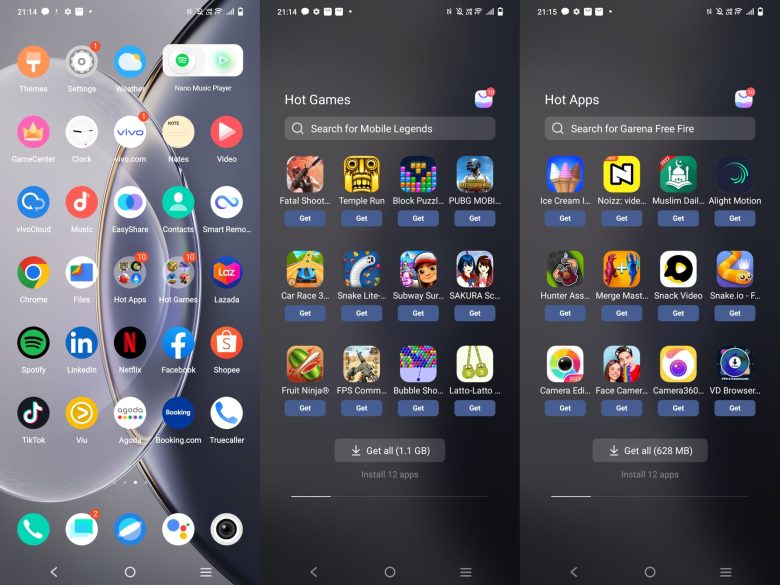TechNode got hold of Vivo’s X90 Pro, the premium product of the Chinese phone maker’s new flagship series launched globally on February 3, and spent the last fortnight trying it out. Below are our thoughts on the phone.
The X90 Pro excels at visual capture. This is unsurprising given Vivo’s collaboration with optics master Zeiss and the phone’s 1-inch camera sensor. The X90 Pro introduces consumers to Vivo’s own optical image stabilization (OIS) technology, allowing for more intelligent and precise stabilization correction. It also boasts improved light sensitivity, aperture size, and natural color processing. The phone uses MediaTek Dimensity 9200 as the core processing chip, which we found gave it plenty of power for daily use plus enough left over to indulge in high-performance gaming.
The series was first released in China last November, starting with the X90 Pro. Now, you can buy the X90 in China and Southeast Asia, while the X90 Pro has reached stores in Southeast Asia and Europe. The new series ranges in price from $600 to $950, depending on model, storage, and where in Asia you’re shopping.
If you’re thinking of buying a new phone, it’s also worth comparing other offerings in a similar price range to Vivo’s X90 series. For example, Xiaomi’s 13 series will be launched globally on Feb. 26, costing an estimated $650 to $1,000.
Professional visuals with help from Zeiss
For the series, Vivo partnered with German optical firm Zeiss to develop a large 1-inch IMX989 sensor. On the X90 Pro, the effort resulted in a stunning imaging system that excels in various scenarios and offers a wide aperture that opens up to f/1.75.


Apart from Zeiss components, the X90 Pro is equipped with Vivo’s exclusively customized V2 Chip, which provides four major functional improvements on the imaging front. For example, the chip adopts a newly upgraded AI noise reduction algorithm, which boosts the main chip for further enhanced resolution in photos and videos captured at night. Some of our sample images were shot on a drizzling, foggy night in Shanghai, but the phone still managed to capture crisp, vivid images.


X90 Pro handled nighttime photography well in our tests. With a clean and depth-enhanced output, the camera displayed a similar level of professional, vivid imagery to photos taken with a large DSLR camera. In a richly lit environment, we can see the light and shadow effect between the buildings in great detail.
It is worth mentioning that when we shot a street lamp at night, the halo effect was minimized, and glare was almost absent. The phone also produces little noise in low-light settings.


X90 Pro also uses ZEISS Natural Color 2.0 color profile, giving photos a realistic look. The two daylight photos above were taken in a natural tone setting. Many Android phones tend to render photos too bright, but the X90 Pro avoids this issue.
A screen kinder for the eyes and a vegan leather back

X90 Pro features a 6.78-inch 3D curved screen with eye protection mode. With refinement of software and hardware, the screen decreases flicker and automatically adjusts brightness according to the ambient light and time of day, thereby reducing eye fatigue in dark environments. Besides, the new luminescent material reduces the level of harmful blue light.
However, the X90 Pro only has a curved screen option, which may not be the first choice for users who favor a flat screen.
The X90 Pro features vegan leather which feels good in the hand and is dirt-proof. But this may not be popular with younger customers. Moreover, it’s a bit heavy to hold and somewhat lengthy to carry in the pocket.
High gaming performance, cluttered UI
Vivo used a dual-chip setup for the new X90 series, including MediaTek Dimensity 9200 and vivo V2 Chip. With Dimensity 9200, X90 Pro, and X90 have ultrahigh AnTuTu Benchmark scores (a cell phone specs testing site) of 1.26 million and 1.22 million, representing a massive leap in performance.
We played Genshin Impact for 30 minutes, a mobile game known for its high demand on phone systems, setting it at the highest quality of 60 frames per second. The display was smooth when running pictures and fighting monsters. During playtime, the phone’s temperature was around 42 Celsius (107.6 Fahrenheit).

The phone’s user interface could use some improvement, as its default setting is a little crowded with all the recommended apps, games, and advertisements.
The X90 Pro offers a 120w wired fast charge and a 4,870 mAh large battery that takes only 29 mins to charge to 100%. For now, the series doesn’t support wireless charging.
Conclusion
In about two weeks’ use, the biggest advantage of the Vivo X90 Pro we found was its camera. It’s a good choice for photographers and can help hobbyists take better snaps. The vegan leather case design makes the phone unique. Its dual-chip setup assures smooth daily use and entertainment. As for long-term performance, it may need further observation when comparing MediaTek Dimensity 9200 with the Snapdragon 8 Gen 2. Below, TechNode summarized the main advantages and drawbacks we found with the Vivo X90 Pro:
Pros
- Powerful camera system with Zeiss
- Dual chip technology MediaTek Dimensity 9200 and Vivo V2 chip
- Innovative design with the vegan leather
- High performance for gaming with eye protection screen
- 120W Dual-Cell FlashCharge
Cons
- No flat screen version, only rounded
- Inconvenient to carry in the pocket due to long screen
- Rear camera with protruding lens may cause dissenting views
- No support for wireless charging
- Too many built-in apps after startup

